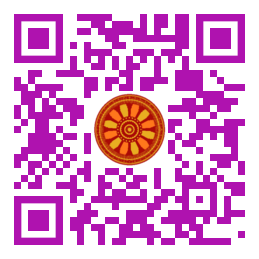
:: International Transaction Journal of Engineering, Management, & Applied Sciences & Technologies
http://TuEngr.com

ISSN 2228-9860
eISSN 1906-9642
CODEN: ITJEA8
FEATURE PEER-REVIEWED ARTICLE
Vol.12(3) (2021) |
BRISK and SIFT-based Copy-Move Forgery Detection of Digital Images
 Sundar Uma, and P. D. Sathya Sakthivel(Department of Electronics and Communication Engineering, Annamalai University, Tamil Nadu-608002, INDIA).
Sundar Uma, and P. D. Sathya Sakthivel(Department of Electronics and Communication Engineering, Annamalai University, Tamil Nadu-608002, INDIA).
Disciplinary: Electronics and Digital Engineering.
doi: 10.14456/ITJEMAST.2021.50
Keywords: Copy-move forgery (CMF); BRISK algorithm; K-means clustering; Key-point technique; Image forgery; SIFT algorithm; CMFD.
AbstractThis paper presents a simple method for copy-move forgery detection (CMFD) of digital images with a view of enhancing the computational speed. The method employs BRISK, which is based on the FAST corner detector, for identifying the key points (KPs), and then uses SIFT for evaluating the feature descriptors at the identified KPs. It also applies wavelet transform for feature reduction and K-means clustering for transforming from feature space into cluster space. It eliminates false matches by using RANSAC. The paper exhibits the superior performances of the developed method over existing methods by presenting results on 500 digital images.Paper ID: 12A3H
Cite this article:
Uma, S., and Sakthivel, P. D. S. (2021). BRISK and SIFT-based Copy-Move Forgery Detection of Digital Images. International Transaction Journal of Engineering, Management, & Applied Sciences & Technologies, 12(3), 12A3H, 1-13. http://doi.org/10.14456/ITJEMAST.2021.50
References
- Bilal, M., Habib, H. A., Mehmood, Z., Saba, T., and Rashid, M. (2020b). Single and Multiple Copy–Move Forgery Detection and Localization in Digital Images Based on the Sparsely Encoded Distinctive Features and DBSCAN Clustering. Arab J Sci Eng. 45, 2975-2992. doi: 10.1007/s13369-019-04238-2.
- Bilal, M., Habib, H. A., Mehmood, Z., Yousaf, R. M., Saba, T., and Rehman, A. (2020a). A robust technique for copy-move forgery detection from small and extremely smooth tampered regions based on the DHE-SURF features and mDBSCAN clustering. Australian Journal of Forensic Sciences. doi: 10.1080/00450618.2020.1715479
- Fischler, M., and Bolles, R. (1981). Random sample consensus: a paradigm for model fitting with applications to image analysis and automated cartography. Commun ACM. 24(6), 381-395. doi:10.1145/358669.358692.
- Huang, Y., Lu, W., Sun, W., and Long, D. (2011). Improved DCT-based detection of copy-move forgery in images. Forensic Science International, 206(1-3), 178-184.
- Kiruthika, K., Mahalakshmi, S. D, and Vijayalakshmi K. (2019). Detecting multiple copies of copy-move forgery based on SURF. International Journal of Innovative Research in Science, Engineering and Technology. 8(6S), 676-680. doi:10.35940/ijeat.f1133.0886s19
- Li, G., Wu, Q., Tu, D., and Sun, S. J. (2007). A Sorted neighborhood approach for detecting duplicated regions in image forgeries based on DWT and SVD. Proceedings of IEEE International Conference on Multimedia and Expo. 1750-1753. doi: 1750-1753. 10.1109/ICME.2007.4285009.
- Liwei, W., Yan, Z., and Jufu, F. (2005). On the Euclidean distance of images. IEEE Trans Pattern Anal Mach Intell. 27(8), 1334-1339. doi:10.1109/tpami.2005.165.
- Muhammad, G., Hussain, M., and Bebis, G. (2012). Passive copy move image forgery detection using undecimated dyadic wavelet transform. Digit Investig. 9(1), 49-57. doi:10.1016/j.diin.2012.04.004
- Paul, K. H, Akshatha K. R, Karunakar A. K, and Seshadri S. (2019). Forgery Detection based on KNN Classifier using SURF Feature Extraction. International Journal of Recent Technology and Engineering. 8(2), 1600-1607. doi:10.35940/ijrte.b2311.078219
- Priyanka, Singh G, and Singh K. (2020). An improved block based copy-move forgery detection technique. Multimed Tools Appl. 79(19-20), 13011-13035. doi:10.1007/s11042-019-08354-x
- Shivakumar, B. L, and Baboo, S. S. (2017). Detection of region duplication forgery in digital images using SURF. International Journal of Computer Science Issues. 4(6), 1-7. doi:10.20943/01201706.17.
- Warif, N, Wahab, A., and Idris, M. (2016). Copy-move forgery detection: Survey, challenges and future directions. Journal of Network and Computer Applications. 75, 259-278. doi:10.1016/j.jnca.2016.09.008.
- Yang, F., Li, J., Lu, W., and Weng, J. (2017). Copy-move forgery detection based on hybrid features. Eng Appl Artif Intell. 59(3), 73-83. doi:10.1016/j.engappai.2016.12.022
- Yu, L., Han, Q., and Niu, X. (2014). Feature point-based copy-move forgery detection: covering the non-textured areas. Multimed Tools Appl. 75(2), 1159-1176. doi:10.1007/s11042-014-2362-y
- Zhang, Z., Wang, C., and Zhou, X. (2018). A Survey on Passive Image Copy-Move Forgery Detection. Journal of Information Processing Systems. 14(1), 6-31. DOI: 10.3745/JIPS.02.0078.
Other issues:
Vol.12(2)(2021)
Vol.12(1)(2021)
Vol.11(16)(2020)
Vol.11(15)(2020)
Vol.11(14)(2020)
Archives
Call-for-Papers
Call-for-Scientific PapersCall-for-Research Papers: ITJEMAST invites you to submit high quality papers for full peer-review and possible publication in areas pertaining engineering, science, management and technology, especially interdisciplinary/cross-disciplinary/multidisciplinary subjects.
To publish your work in the next available issue, your manuscripts together with copyright transfer document signed by all authors can be submitted via email to Editor @ TuEngr.com (no space between). (please see all detail from Instructions for Authors)
Publication and peer-reviewed process:
After the peer-review process (4-10 weeks), articles will be on-line published in the available next issue. However, the International Transaction Journal of Engineering, Management, & Applied Sciences & Technologies cannot guarantee the exact publication time as the process may take longer time, subject to peer-review approval and adjustment of the submitted articles.